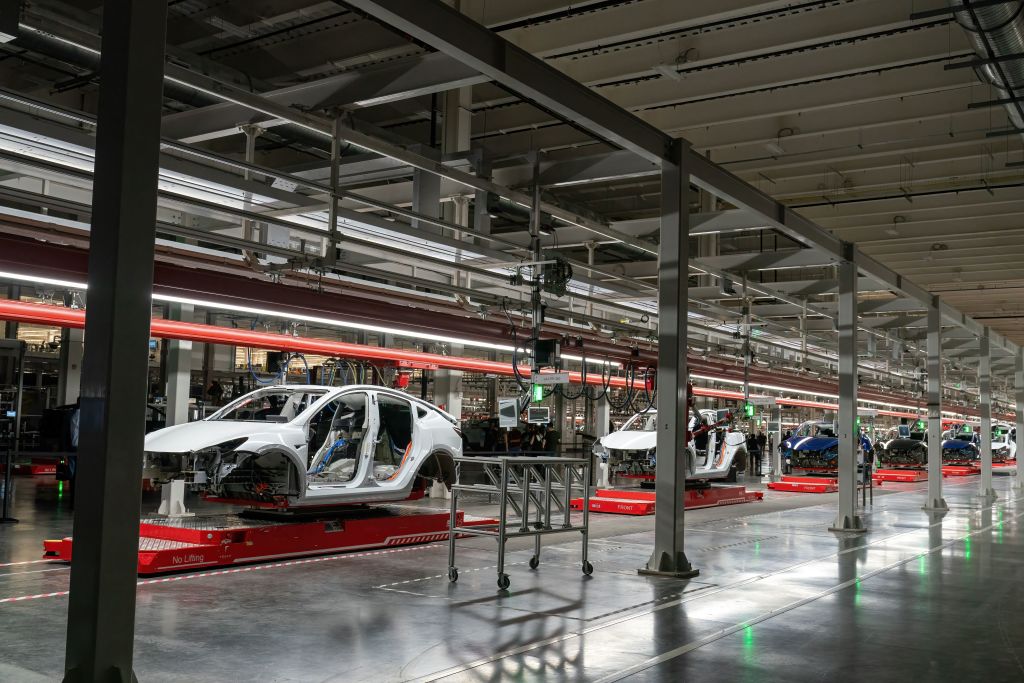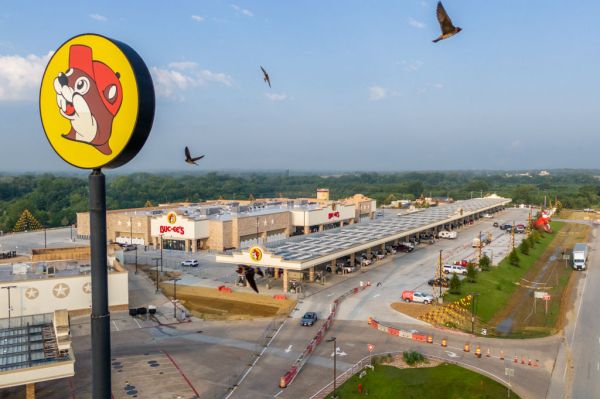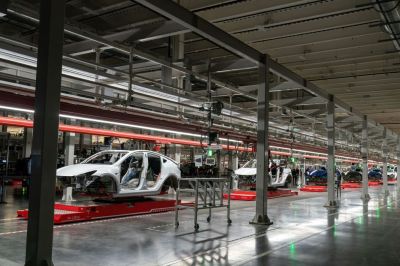“The Good Old Days of Manufacturing Are Long Gone,” economist Rebecca Patterson argues in the pages of the New York Times, casting doubt on the promises of Kamala Harris and Donald Trump to cultivate a “manufacturing renaissance.” She could not be more wrong.
These are the good old days of manufacturing. This is, by any relevant measure, the renaissance.
But Patterson isn’t writing about the relevant measures. More importantly, Harris and Trump are also talking about the irrelevant metric, too: manufacturing employment as a share of overall employment. The error at work is an ancient and enduring one: It is the belief that the purpose of an automobile factory is not manufacturing cars but manufacturing jobs.
Say it with me: Jobs are a means, not an end.
Have a gander at those relevant metrics, numbers you’d think the Harris campaign would be trying (erroneously, of course) to claim credit for. Total manufacturing output in the United States is—right now!—at a record level. Investment in factories and manufacturing facilities reached an all-time high earlier this year. And what about all that nefarious globalization that’s supposedly eating our lunch? In 2023, U.S. firms exported more durable goods than they had in any year before that, with durable-goods exports exceeding $1 trillion and total manufacturing exports topping $1.6 trillion. Put another way, U.S. manufacturing exports add up to more than the combined revenue of Walmart, Amazon, and Apple.
About 10 percent of U.S. workers are employed in manufacturing, down from about 15 percent throughout the supposed golden age of factory work in the 1950s. That’s a big decline—and that decline is a good thing. U.S. manufacturing has thrived because it has grown more efficient, making U.S. firms remarkably competitive. That has produced a familiar byproduct of innovative and massive capital investment: fewer jobs (or fewer jobs than there might have been without technological improvements) but at higher wages, the same pattern we have seen in any other number of industries (say, warehousing and logistics or retail) over the years. Productivity goes up, wages go up, profits go up. It’s a win/win.
To argue that it would be better if we had more manufacturing jobs (and the politicians would prefer that these be at even higher wages, of course) is to argue that U.S. firms and the overall U.S. economy would be better off if key firms in critical sectors had to labor under more expensive inputs. It is like arguing that the homebuilding industry would be healthiest if lumber and other building components got more expensive or that the tire industry would thrive if the price of rubber doubled. We don’t like to think of labor as just another input, of course, because we don’t like to think of ourselves as inputs. But that is, as a purely economic matter, what manufacturing labor is: an input. More expensive inputs make firms less profitable, less flexible, and less innovative—and that isn’t any better for assembly-line workers than it is for shareholders. If you really care about the overall economic health of the country, what you want isn’t necessarily more jobs but more output.
More is more, and there is no substitute for abundance.
One particularly idiotic lie that the success of U.S. manufacturing should put to rest: the nonsensical belief that manufacturing jobs chase low wages. The world’s manufacturing powerhouses are in the U.S., Japan, and Europe, in high-wage economies, not in Haiti or Somalia. Even in China, where wages remain lower than in the United States or Western Europe, manufacturing employment has gone along with rising wages rather than decreasing wages. And which would you rather own: Daimler AG, maker of Mercedes-Benz, or Dongfeng Motor Group, maker of ... this? And even Dongfeng presumably sends about half its profit to Japan, where 50-percent owner Nissan is headquartered. The notion that middle-income China is outdoing the rich and prosperous United States in the things that matter is, to say the least, not obviously true.
Put another way: Would you prefer that your kids go to work building robots for Boston Dynamics or hitch their wagon to the extortionate Luddites over at the longshoremen’s union, who are using the freshest ideas from the 19th century to try to stop the ports from investing in the sort of thing that Boston Dynamics builds?
Because that’s really the choice.
When it comes to labor economics, we live in a world of upside-down Malthusianism. It’s a world filled with the superstitious belief that there is always too much to go around, that there simply isn’t enough work to be done in the world. That myth dies with the slightest contact with reality. Of course, there is such a thing as a transaction cost, and there are disruptions when changes in the methods of production—whether caused by technological innovation or competition—force workers to change jobs and adapt to new economic realities. There are things that we can do through public policy to help defray some of those expenses and to help workers reorient their efforts ( for example, by replacing or supplementing some unemployment benefits with relocation benefits for displaced workers moving for new jobs). But there isn’t any way—short of economic stagnation enforced at gunpoint—to prevent the necessity of adapting to economic change.
And Americans are pretty good at that. Look around. As Dominic Pino notes in National Review, if Canada’s highest-earning province (Alberta) were a U.S. state, it would be the poorest U.S. state by income. U.S. GDP per capita is nearly 60 percent higher than that of Germany and about twice the average of the European Union—because we let markets work, because we let investors work, because we let innovation work. We’ve got a whole flock of magnificent geese laying golden eggs, and manufacturing is only one of them.
Only a politician—or a New York Times headline writer—could look at the facts and say: “What we need is a less efficient manufacturing sector.”
But Kamala Harris and Donald Trump see things differently. So here’s a hot tip: Invest in spoons.







Please note that we at The Dispatch hold ourselves, our work, and our commenters to a higher standard than other places on the internet. We welcome comments that foster genuine debate or discussion—including comments critical of us or our work—but responses that include ad hominem attacks on fellow Dispatch members or are intended to stoke fear and anger may be moderated.
With your membership, you only have the ability to comment on The Morning Dispatch articles. Consider upgrading to join the conversation everywhere.